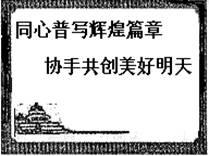A bite of a cookie containing peanuts could cause the airway to constrict fatally. Sharing a toy with another child who had earlier eaten a peanut butter and jelly sandwich could raise a case of hives. A peanut butter cup dropped in a Halloween bag could contaminate the rest of the treats, posing an unknown risk.
These are the scenarios that "make your bone marrow turn cold" according to L. Val Giddings, vice president for food and agriculture of the Biotechnology Industry Organization. Besides representing the policy interests of food biotech companies in Washington, D. C., Giddings is the father of a four-year-old boy with a severe peanut allergy. Peanuts are only one of the most allergenic foods; estimates of the number of people who experience a reaction to the beans hover around 2 percent of the population.
Giddings says that peanuts are only one of several foods that biotechnologists are altering genetically in an attempt to eliminate the proteins that do great harm to some people’s immune systems. Although soy allergies do not usually cause life-threatening reactions, the scientists are also targeting soybeans, which can be found in two thirds of all manufactured food, making the supermarket a minefield for people allergic to soy. Biotechnologists are focusing on wheat, too, and might soon expand their research to the rest of the "big eight" allergy-inducing foods: tree nuts, milk, eggs, shellfish and fish.
Last September, for example, Anthony J. Kinney, a crop genetics researcher at DuPont Experimental Station in Wilmington, Del., and his colleagues reported using a technique called RNA interference (RNAi) to silence the genes that encode p34, a protein responsible for causing 65 percent of all soybean allergies. RNAi exploits the mechanism that cells use to protect themselves against foreign genetic material; it causes a cell to destroy RNA transcribed from a given gene, effectively turning off the gene.
Whether the public will accept food genetically modified to be low-allergen is still unknown. Courtney Chabot Dreyer, a spokesperson for Pioneer Hi-Bred International, a subsidiary of DuPont, says that the company will conduct studies to determine whether a promising market exists for low allergen soy before developing the seeds for sale to farmers. She estimates that Pioneer Hi-Bred is seven years away from commercializing the altered soybeans.
Doug Gurian-Sherman, scientific director of the biotechnology project at the Center for Science in the Public Interest—a group that has advocated enhanced Food and Drug Administration oversight for genetically modified foods—comments that his organization would not oppose low-allergen foods if they prove to be safe. But he wonders about "identity preservation" a term used in the food industry to describe the deliberate separation of genetically engineered and no nengineered products. A batch of nonengineered peanuts or soybeans might contaminate machinery reserved for low-allergen versions, he suggests, reducing the benefit of the gene-altered food. Such issues of identity preservation could make low-allergen genetically modified foods too costly to produce, Chabot Dreyer admits. But, she says, "it’s still too early to see if that’s true. \
According to the text, foods have been genetically altered to().
A. taste more delicious
B. to cure people’s ineffectiveness in immune system
C. to promote sales of peanut
D. to lower the chance to get allergy
参考答案:D
解析:
[考点] 事实细节
本文的前两段都在讲食品过敏的问题,对转基因只字未提,而文章的第一个问题问的却是转基因的问题,那就说明转基因这个话题跟文章前两段有必然联系。倘若前两段的内容与转基因无关,那么就根本没有存在的价值,不会被保留下来。所以这道题的解题思路:判断出问题不是主旨题,进而判断问题跟文章前面部分内容相关,从而把过敏和转基因联系起来。如上所分析,我们初步判断出过敏与转基因技术之间有联系后,就要找出是何种联系,由于文章的第一、二段未提及转基因,我们就从第三段开始找。第三段的第一句话就指出了:人们通过转基因技术改造食品,从而降低过敏的风险。因此选项D是正确答案。
[干扰项分析] 选项A、C在文中都没有提及,况且这两个选项都仅仅局限于文中所举花生这个例子本身,并未上升到一定高度,因此容易被排除。选项B脱离了例子本身,具有一定的迷惑性。immune只在文中第三段出现一次,但第三段明确指出了转基因技术是通过去除一些让人类过敏的蛋白质,从而达到降低过敏几率的效果,其目的不是治疗人类的免疫系统.后文也再没有提及人类免疫系统,因此选项B可以排除。

